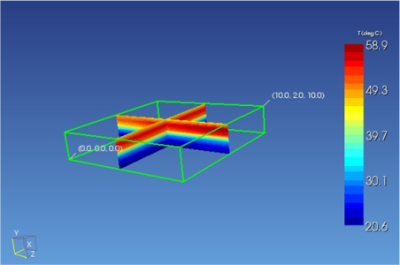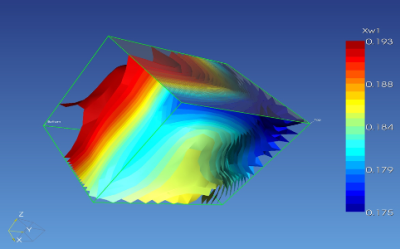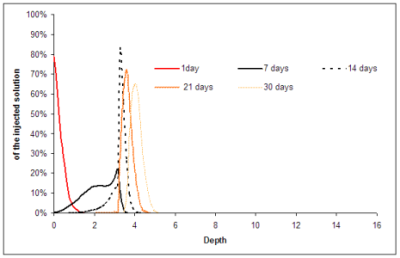Modelling physical and chemical processes used for treating organic waste
Treatment processes of interest are chemical (ammonia/urea application), and heat treatments of human faecal material and house waste for safely recycling of nutrients. The design of such treatments required modelling of ions diffusion, heat generation and distribution and moisture transport within an organic porous like material. In this context the distribution of heat, water and solute can not be based on a single or few physical models, but it is itself the result of complex interaction between concurrent and dependent physical processes:
* heat, water and solute conduction through the component of the solid matrix;
* heat, water and solute conduction by the non solid phases and within them;
* heat, water and solute exchange between the phases;
* heat, water and solute convection complex phenomena;
* vapour air diffusion, water movement due to capillarity, air-vapour equilibrium and evaporation.
The scenario increases further in complexity because the substrate can change during the treatment process in its chemical composition and physical structure. Such complexity has made the development of new tailored algorithms based on the physics of ions and heat diffusion within a porous media an unsuitable solution within the time constraints of the project. Therefore the modelling study is currently carried out evaluating the use and modification of existing graphic interface (GUI) models designed for simulating heat and mass transfer in other porous media such as soil, geological strata or biological tissues. Organic waste are in fact constituted of an organic solid component, great part of it easy degradable by microbial activity, and of gas and liquid phases, which will provide the water and the oxygen demanded by the microbial degradation, reproducing a scenario not very far from a soil matrix partially saturated with water carrying several chemical and bacterial components. Two GUI transport models in porous media are currently under evaluation: TOUGH2 –PETRASIM and HYDRUS-1D, which based on slightly different physical equations and numerical solutions, are suitable to model different treatment scenarios.
TOUGH2 is Computational Fluid Dynamic simulation model based on Navier-Stokes Equations solved in a finite element mesh, where each single finite element can be set with different thermal and physical properties, as a sink or a source of heat and/or mass. This allows simulating heat and mass transfers in waste linked to different sanitation treatments.

Simulated gradients of temperature within sewage sludge in a solar drier.

Simulated ammonia diffusion in human excreta.

Simulation of ammonia concentration in soil solution, along a soil profile with a top layer of faecal polluted soil, after1, 7, 14, 21 and 30 days from the surface injection of 1 (mml/lt) ammonia solution.
HYDRUS-1D, and its 2-3D version have been developed for heat and mass transfer in unsaturated VADOSE zone, it can be coupled with PHREEQC to simulate chemical chain reactions of organic and inorganic solutes. Used originally for soil hydrology and soil pollution studies, can solve problems which can fit within the limit of Richard Equation.
Project leader: Håkan Jönsson
Co-workers: Francesco Agostini
Project period: 2008-2010